Successful blogs often lead to strong online communities. This means people keep coming back to read your content, comment on it, and in some cases, contribute with amazing ideas of their own. Opening your site up to user-submitted articles can be a smart way to fill your post calendar and build loyalty with your audience.
If there’s one thing that’s true for every blog it’s this: the more quality content you publish, the better. In this article, we’ll explain the benefits of accepting user submissions. Then we’ll go over four ways to approach this process in WordPress.
Let’s jump in!
Subscribe To Our Youtube Channel
Why Accepting User-Submitted Articles Is a Smart Idea
Blogs are content-driven websites. If you’re not sharing new posts regularly, chances are your audience will begin to drift away. In practice, that means you probably have a pretty grueling publishing schedule:
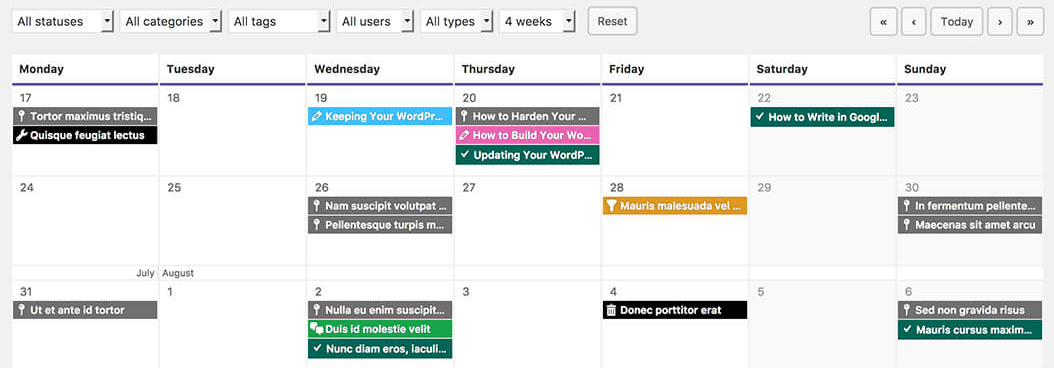
It’s not uncommon to find blogs that update once or twice a week, and there are even those that do so daily, including ours. All that new content doesn’t just sprout from the ground. For most online publications, new posts come from one or more of these four sources:
- An in-house writing team
- Freelance writers
- Syndicated content
- User-submitted articles
In most cases, you want to rely on an internal writing team since they can learn your niche, product, or service inside and out. Freelancers are also handy, but they can be expensive. They may not be an option unless you have a sizable budget.
Syndicated content is useful because it takes some of the writing effort off of your plate. However, sourcing posts that are relevant to your audience with proper attribution can be a challenge.
When it comes to your audience, though, no one understands what they really want to read about more than they do. Opening up your blog to accept user submissions is an excellent way to loosen the pressure on your internal team.
In our experience, your audience will usually surprise you with how creative their ideas can be. No matter how strong your team is, there are always topics or questions they might overlook. Accepting user submissions is, in many ways, a form of crowdsourcing, which means you get access to a lot more brainpower.
If you haven’t heard yet, the Elegant Themes blog is open to user submissions. You can pitch us your idea and if it meets our editorial guidelines, we may accept it. All our writers get paid, too, so it’s a win-win.
4 Ways to Accept User-Submitted Articles for Your Blog
There are several ways you can accept user-submitted articles in WordPress. The most rudimentary would be to publish an email address visitors can contact to pitch topics. However, there are several other methods that are a little more straightforward and practical, including those below.
1. Use an External Platform
The way we handle user submissions at Elegant Themes is via Asana. This platform includes a form users can fill out to share their contact information, the type of article they want to tackle, and more:
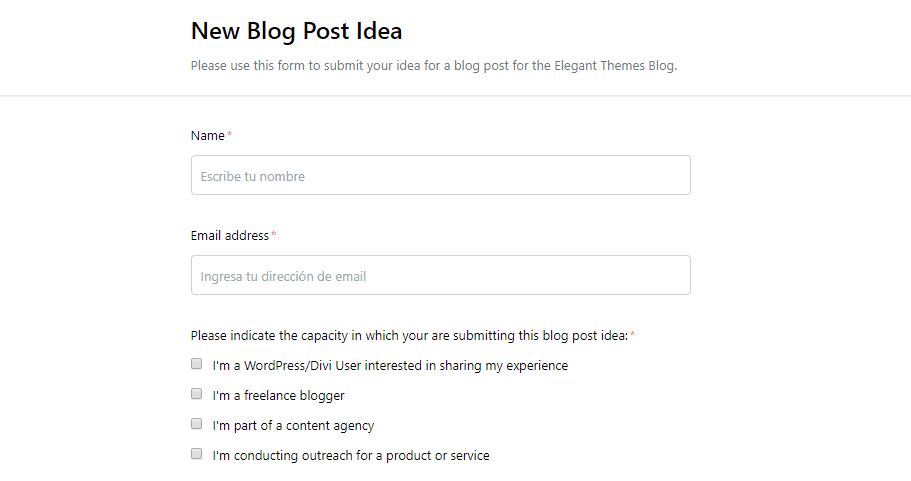
We could achieve the same goal with a form created in WordPress, and published on our own website. However, using a third-party service enables us to:
- Design more complex forms
- Enable users to upload PDFs and author headshots without risking the security of our site
- Automatically segment and assign submissions to relevant team members using Asana’s project management functionality
If you don’t foresee yourself using Asana’s project management features, you can also look into form hosting platforms such as Typeform or Google Forms. These tools offer similar benefits and may fit into your existing workflow better.
Additionally, many third-party form services provide you with analytics regarding your submissions. This data can help you understand how many users you’re reaching and what you can do to increase engagement.
2. Set Up an Internal Submission Form
All that said, adding an on-site user submission form is still a viable option for sourcing articles. When you boil it down, all you really need is a field where writers can include their pitches:

Contact forms are one of the most common website elements you’ll run into. While simple, they’re also convenient in that they eliminate the need for visitors to track down your address and open their email client in a new tab.
Since we’re talking about WordPress, the easiest way to add an internal submission form is with a plugin. If you use Divi, you can take advantage of our Contact Form module:
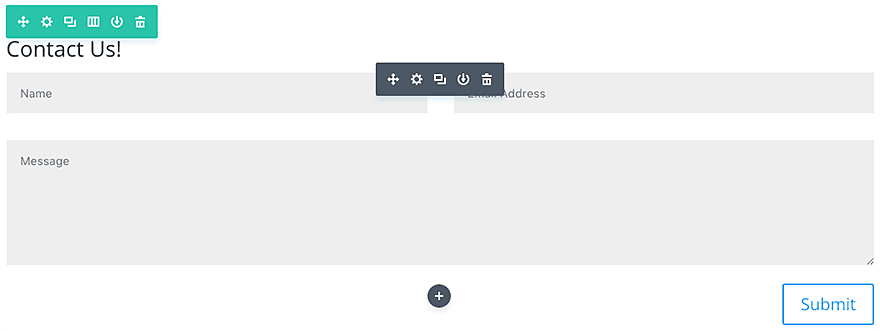
Contact Form 7 and WP Forms are also high-quality tools. Both options enable you to set up and customize forms to your liking.
How many fields you want to add to your form is up to you. To make your life easier, though, we recommend you tell users exactly how to format their submissions and what your editorial guidelines are.
Some may not read the fine print, but this can still save you a lot of time when it comes to editing and formatting posts.
3. Enable Users to Submit Posts Directly Through WordPress
One downside of both the methods we’ve gone over so far is that you’re still the one that has to add the finished drafts to WordPress. Copying and pasting content is simple, but you still have to think about formatting, adding images, and other details. In our experience, that process can sometimes take as long as the writing itself.
If one of your primary goals when it comes to accepting user content is to save time, you might want to consider another approach. For example, you could enable visitors to submit drafts directly into WordPress, so there’s less back and forth involved:
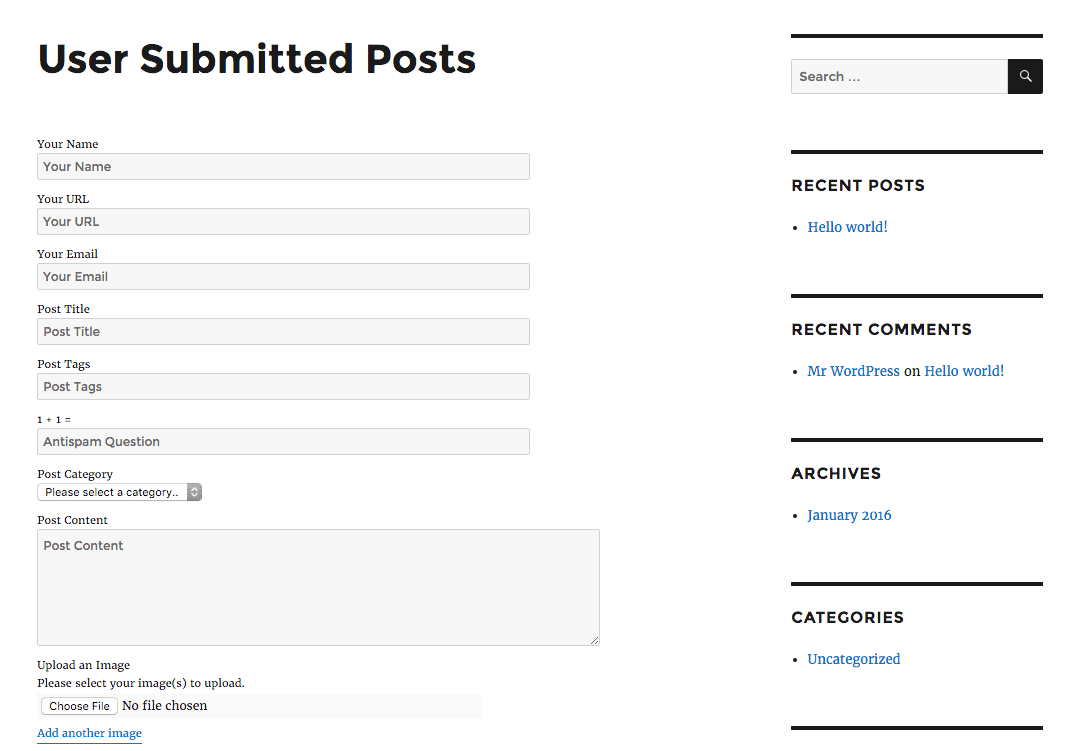
When it comes to enabling this method, the best plugin for the job is User Submitted Posts. With this tool, you can publish forms that include all the information WordPress needs to create new posts.
Once a user submits their article, the plugin automatically sets up a new draft or pending post. If you like to live on the edge, it can even publish submissions immediately. However, we don’t recommend this route as it doesn’t enable you to screen for quality content.
This process saves you from having to set up new posts yourself, and handles at least some of the formatting. You can give users even more control by configuring User Submitted Posts to require registration and login.
Users can then access your dashboard and edit their own work, but cannot publish it without permission. A similar solution is to enable registration on your WordPress site and set the default role to Contributor.
Overall, giving users access to your dashboard isn’t usually a ideal idea from a security standpoint. However, when it comes to user-submitted articles, it’s definitely the most efficient method.
4. Set Up a Forum for User Submissions
So far, all the methods we’ve talked about rely on forms in one way or the other. However, another popular option is to enable submissions via community forums:
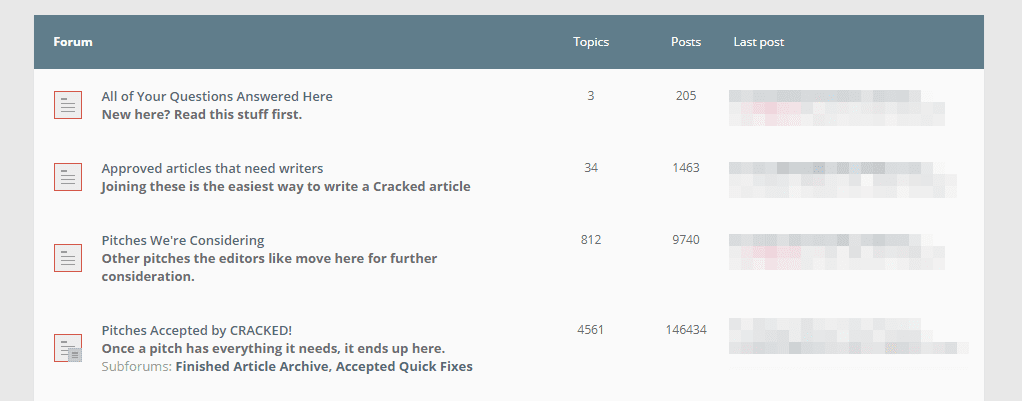
There are a lot of upsides to setting up a forum for your WordPress blog. If you’re trying to foster community, online discussions provide your visitors with the perfect place to connect. Plus, by making the pitching process public, you can enable users to work together.
Although WordPress doesn’t include forum functionality out of the box, you can use plugins such as bbPress to set up public or private forums. The WordPress.org support forums, for example, are powered by this tool:
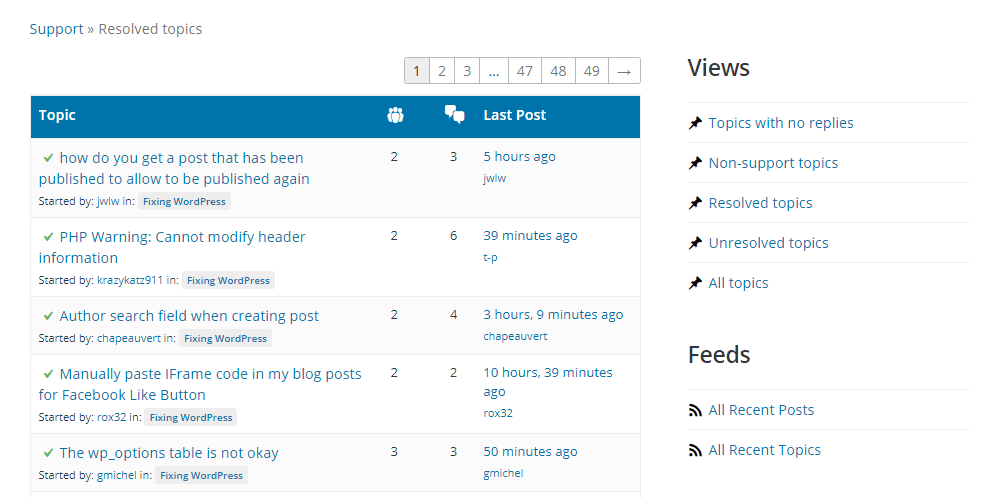
Once your forums are up, you can set up different sections for users to submit ideas. You can also have subtopics for members to talk about types of content they would like to see, their favorite existing articles, and more.
In addition to bbPress, there are many other forum plugins you can use with WordPress. If you want to accept user submissions as transparently as possible, this is a solid approach to consider.
Conclusion
Your blog’s readers can be your best resource when it comes to creating valuable content. In many cases, they’ll come up with ideas you might never have imagined on your own. Accepting user submissions isn’t only a smart business move, but can also knit your site’s community together.
When it comes to WordPress, there are four methods you can employ to receive user-submitted articles:
- Use an external platform such as Asana.
- Set up internal submission forms.
- Enable users to submit posts directly through WordPress.
- Set up a forum for user submissions.
If you are looking for a way to manage and track submissions within the WordPress dashboard, you can look into using a project management plugin. Or consider using an editorial calendar plugin to streamline your blog publication schedule even more.
Do you have any questions about how to accept user submissions in WordPress? Let’s talk about them in the comments section below!
Article image thumbnail by Jane Kelly / shutterstock.com









Really like the idea of User Submitted posts.
Is there a chance to make it look like Divi form ?
Great article! My site is set up to eventually collate lots of stories and blog posts from other users, mainly medical professionals but also patients. I want to be able to share experiences and opinions as well as high quality evidence based pieces.
I’ve been toying with different ways to allow this to happen, so far I’m accepting emails and contacts via forms, URL to copy+paste of their own blog, but it just seems inefficient and unprofessional in a way.
I’ve been looking for a plugin for it and the one you mention (usersubmittedposts) may just be it so thank you!
Love the idea of allowing the visitor submit drafts directly into WordPress. Though I haven’t accepted any user generated content on my blog but the idea is a good one as it allows one never run out of blog post to publish on site. Thanks for sharing, and particularly the third option.
You are very welcome Emmanuel, glad you found it useful 🙂
Hello, for what reasons i need to allow users to submit articles?
That is explained in the article under the heading “Why Accepting User-Submitted Articles Is a Smart Idea” – thank you for your comment Iamia 🙂
Totally agree that user created content is a god send but can also be a hindrance too. I utilise a WP theme that has this natively integrated. My only issue is the standard of posts people like to share, hence why I now place them as pending, but content is key and if users can do it for you, then your on your way to winning. BTW Great Artlicle
Good points, glad you liked the article 🙂